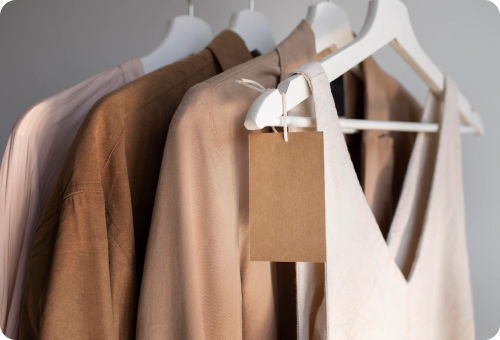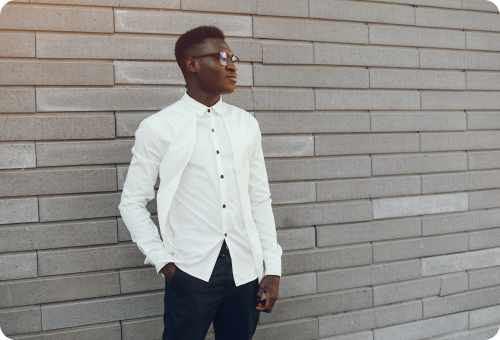

Dress Code for an Interview
No matter what job you’re interviewing for, it’s better to dress up a little more than necessary than not enough. In most cases, you’ll want to dress a little more formally in the interview than you would on a typical day at that job. And regardless of how informal the job is, business casual is the least dressy you can go for an interview. Even if you’re applying to flip burgers. Shine it on up.
For the ladies
If anyone ever wears a suit at this company, you should definitely do so in the interview. In most cases you’ll want a nice wool pantsuit with either a button-down blouse or a modest silk shell underneath. Check yourself from multiple angles, and multiple arm positions, to make sure there’s no peek-a-boo cleavage going on. Wear conservative jewelry: earrings no longer than 2″ (studs are best, since they don’t bob distractingly while you talk), and a simple, classic necklace. Pumps or very dressy shoes are a must with a suit. No open toes. If you’re going the business casual route, you’ll want to do the essentially same as above minus the suit jacket.

For the Guys

For the Guys
Same principle: If anyone ever wears a suit at this place, you should too. A black suit is good for business and other formal jobs, but grey or navy is better for academic and other creative professional positions. Either way, wear black dress shoes, a white or light-colored shirt, and a non-distracting tie. If you tend to perspire, be sure to wear an undershirt. If you’re wearing business casual, simply leave off the suit jacket. Your hair and facial hair should be impeccably groomed.
Rules of thumb
- Call the administrative assistant at the office to find out what most candidates wear to interview.
- Bring along a nice briefcase or attaché, with a business-quality notebook and pen. Under no circumstances bring a backpack or casual shoulder bag to a job interview.
- Even if you are short on cash, invest in real dry cleaning for your suit before wearing it to the interview (unless it’s new). You don’t want to show up wrinkly or smelling like Dryell.
- Make sure that your clothes fit properly and are absolutely free of holes or blemishes. If they don’t fit well off the rack, get them tailored. It will make a big difference.
- Don’t try to make a statement with your outfit. The employer should remember you for your brilliant insights on teamwork, not the appalling mustard yellow shirt you wore with a chartreuse scarf. Ideally, your outfit will blend seamlessly with the context, such that you simply look like a slightly shinier version of everyone else who already works there.


